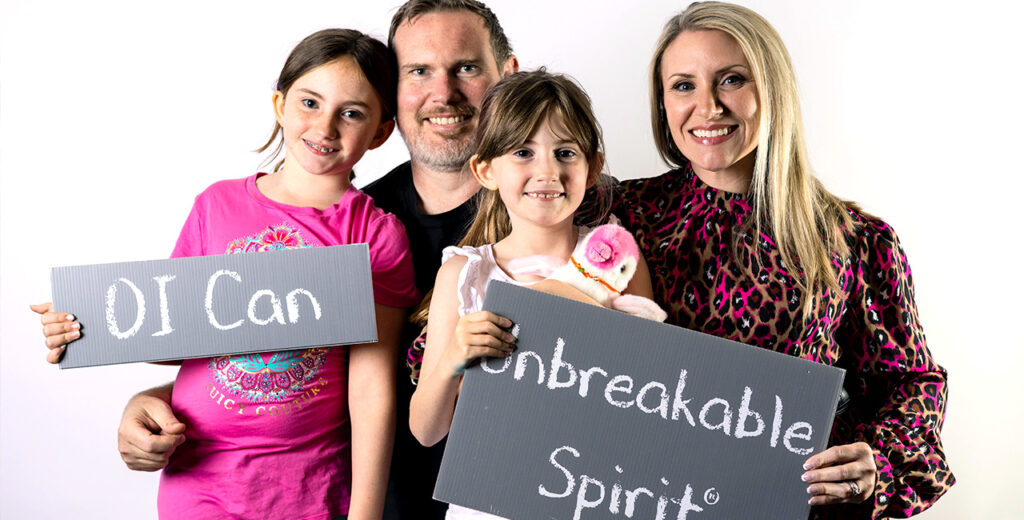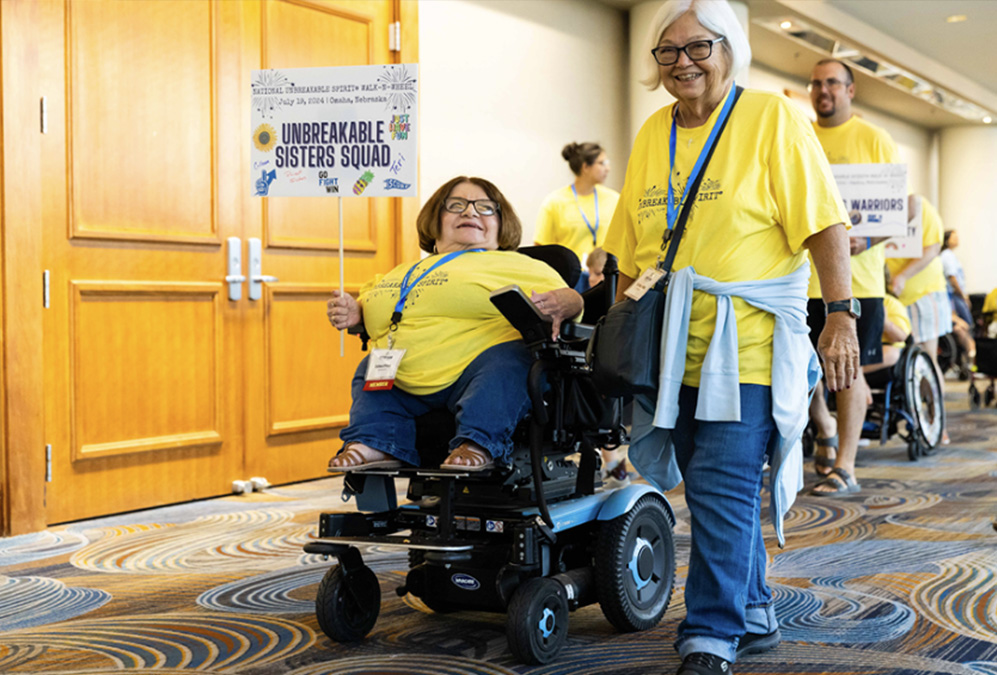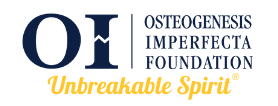OI Types and Genetics

SHARE
OI Types and Genetics
OI Types
Since the 1970’s, a list of numbered types has been used to describe the different forms of OI. Many people with OI do not fit clearly into one of the identified types and not all characteristics are seen in each person. A description of the more common OI types follows. Understanding the individual’s OI type provides a starting point for understanding the person’s unique healthcare needs. Because of all of the variable features of OI, care for each person needs to be individualized.
- Type I OI: people with Type I OI, the mildest and most common form, may have only a handful of fractures or as many as several dozen fractures in a lifetime. They may have few obvious signs of the disorder. In Type I, there usually is little to no bone deformity. Height is less affected than in other types of OI, and many people with Type I are often similar in height to other family members. Muscle weakness, joint laxity, and flat feet are common. Dislocations and sprains may occur, as well as fractures. Life expectancy appears to be average.
- Type II OI: is the most severe form of OI. Infants are quite small and are usually born with multiple fractures, an unusually soft skull, and an unstable neck. Limbs may be disproportionately small, and legs may fall into a frog-like position. The head may be large for the size of the body. Almost all infants with Type II OI die at or shortly after birth, often due to respiratory problems. In the newborn period, it can be difficult to distinguish between Type II and severe Type III OI. This means that some children diagnosed clinically as Type II at birth may actually have Type III OI and have a longer life expectancy.
- Type III OI: People with Type III OI are born with fractures. X-rays may reveal healed fractures that occurred before birth. Common signs include short stature, progressive long bone deformities, spinal curvature, and a barrel-shaped rib cage. People with Type III OI may have anywhere from several dozen to several hundred fractures in a lifetime. Surgical correction of long bone bowing and scoliosis is common. Life expectancy varies. Some people with Type III OI have severe, sometimes fatal, respiratory problems in infancy or childhood. Some children with Type III OI may require supplemental oxygen. Some individuals succumb to respiratory problems in adulthood due to progressive rib cage and spine deformities. Other people with Type III OI will have a near-average life span.
- Type IV OI: Type IV OI is the moderate type of OI. The clinical picture can be similar to Type I OI or more like Type III OI. People with this form of OI may be somewhat shorter than others in their family, have frequent fractures that decrease after puberty and have mild to moderate bone deformity. Life expectancy for people with Type IV OI appears to be average.
- Type V OI: This type is moderate in severity and is similar to Type IV in appearance and symptoms. Identifying features include hypertrophic calluses that may form at fracture or surgical procedure sites and restricted forearm rotation due to calcification to the membrane between the radius and ulna.
- Type VI OI: Type VI OI is another moderate form and is similar to Type IV in appearance. This is an extremely rare form. It is distinguished by a characteristic mineralization defect that can be seen in biopsied bone.
For additional information on OI Types see the OIF Fact Sheets.
Genetics and Inheritance
Different types of OI have dominant, recessive or X-linked inheritance. It is important to have genetic testing to know the genetic defect causing OI for family planning and participation in OI research studies.
The most prevalent types of OI have dominant inheritance, which means that a mutation in one copy of a collagen or IFITM5 gene will cause the condition. This is the genetic pattern that will apply to most families with OI. People can inherit dominant OI from a parent, or they can have a new mutation causing OI. Either way, the person with dominant OI can pass this OI mutation to their children (50-50 chance in each pregnancy). The affected child of an OI parent has the same mutation as the parent and generally the same degree of severity, but severity may also be milder or more severe than in the parent.
Most of the rare (non-collagen) types of OI have recessive inheritance. In recessive inheritance, the affected individual has mutations in both copies of a particular OI-causative gene. They have inherited mutations from both of their parents, but the parents are generally not aware they are carriers because they have one normal copy of the gene in question. When a couple has a child with recessive OI, the risk of recessive OI to their other children is 25% per pregnancy. The children of affected persons with recessive OI will all be OI-carriers, because they will inherit a one of the two mutant gene copies from their affected parent but would not be expected to be affected themselves.
One quite rare type of OI is X-linked, which means that the causative gene is on the X-chromosome. Since males have only one X-chromosome, it is expected that only boys would be clinically affected and that they would have inherited the mutant MBTPS2 gene from their carrier mother. Most carrier mothers will have no symptoms, but some can have mild symptoms. The daughters of affected males will themselves be carriers, but the sons of affected males would not be at risk for OI greater than the general population. A medical geneticist or a genetic counselor can provide information on OI genetics and reproductive decision making.
Helping our community stay up to date and connected.
Please sign up to receive updates from the OI Foundation including our monthly e-Newsletter, research updates, and upcoming event information.

